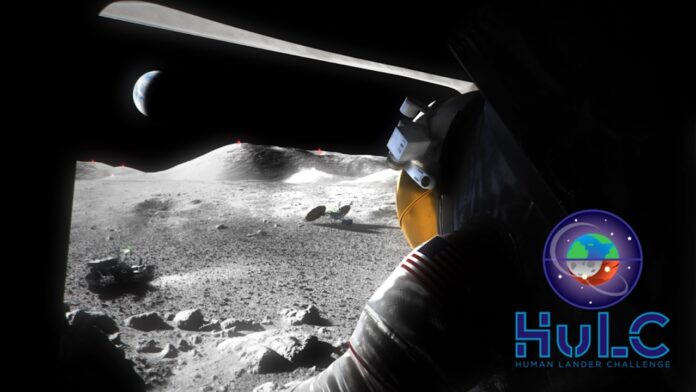Calling all university students: NASA needs your help.
As part of its Artemis program, the agency is seeking ideas about how to manage or prevent the dust clouds that stir up when a spacecraft lands on unprepared surfaces like the Moon, known as “plume-surface interaction” (PSI).
“The Moon is covered with granular, rocky material called regolith, which can be lifted from the surface by rocket engines during landing and ascent,” according to(Opens in a new window) Ashley Korzun, principal investigator at NASA’s Langley Research Center in Virginia. “Understanding and reducing these effects are key challenges for NASA to overcome for safe lunar surface access.”
To land large payloads—like those crews will take to collect samples, perform science experiments, and observe the lunar environment—NASA’s Human Landing System (HLS) uses rocket engines. But high-velocity dust and plumes can cause damage to the lander, as well as nearby surface assets. Enter the Artemis Generation of problem solvers.
The Human Lander Challenge (HuLC)(Opens in a new window) invites undergraduate and graduate students from accredited US colleges and universities to develop “innovative, systems-level solutions” that can curtail the impacts of PSI and dust on exploration. That may include dust shields, dedicated flight instrumentation, or simply finding a way to see through the cloud during ascend and descent.
“Besides creating a more challenging landing environment,” Korzun explained, “disturbed lunar dust can also damage other assets NASA plans to establish on the Moon’s surface, like habitats, mobility systems, scientific experiments, and other critical infrastructure.”
Up to 12 teams may be selected to compete at the Human Lander Challenge Forum in June 2024. Each will receive a $7,000 stipend to produce a technical paper and design models or prototypes for presentation to a panel of experts. The top three teams will share an $18,000 grand prize—$10,000 for first, $5,000 for second, $3,000 for third.
Recommended by Our Editors
“It is our mission to have a lunar landing capability that allows astronauts to travel to the surface of the Moon and back safely on a regular basis,” Lisa Watson-Morgan, manager of Human Landing Systems, said in a statement. “The challenge of managing the dust stirred up by lunar landers is a top priority, so this is a great opportunity for students to work with NASA in advancing humanity’s exploration of the Moon’s South Pole region under Artemis. We look forward to seeing what these teams come up with.”
Interested students must register their notice of intent by Oct. 22, 2023, and submit a proposal and video no later than March 4, 2024. The challenge is sponsored by NASA’s Human Landing System Program and managed by the National Institute of Aerospace.
Get Our Best Stories!
Sign up for What’s New Now to get our top stories delivered to your inbox every morning.
This newsletter may contain advertising, deals, or affiliate links. Subscribing to a newsletter indicates your consent to our Terms of Use and Privacy Policy. You may unsubscribe from the newsletters at any time.
Hits: 0












